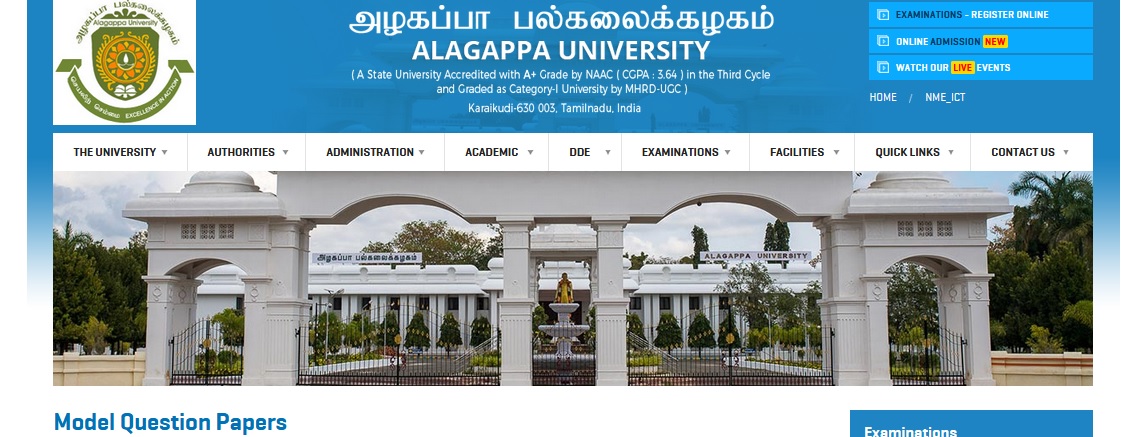Naval Architecture-II B.Sc Model Question Papers : alagappauniversity.ac.in
Name of the University : Alagappa University
Degree : B.Sc
Department : Nautical Science
Subject Code/Name : Naval Architecture-II
Document Type : Model Question Papers
Website : alagappauniversity.ac.in
Download Model/Sample Question Paper : Nov 2010 : https://www.pdfquestion.in/uploads/alagappauniversity.ac.in/4231.-B.Sc.%28Nautical%29.pdf
Alagappa Nautical Science Question Paper
B.Sc. DEGREE EXAMINATION, NOVEMBER 2010
Time : 3 Hours
Maximum : 100 Marks
Answer all questions.
NAVAL ARCHITECTURE—II
1. (a) Draw and explain the Longitudinal and Transverse framing system
(Or)
(b) Draw and explain the general pumping and piping arrangement
Related : Alagappa University Aircraft Instruments B.Sc Model Question Papers : www.pdfquestion.in/4234.html
2. (a) Draw and explain the midship section of tanker of combined framing system
(Or)
(b) Write short notes on :(i) Ring Main system. (ii) Sounding Pipe.
3. (a) Draw and explain water cooled stern tube used on board a vessel.
(Or)
(b) Draw and explain the parts of ships speciallystrengthened and stiffened
4. (a) Draw and explain semi-balanced Rudder fitted in Twin-screw ship.
(Or)
(b) Explain the stage by stage process carried out in the block-construction
5. (a) A ship 150 m long floats at draughts of 8.2 m.
(Or)
(b) A ship of 8,000 tonne displacement has its centre of Gravity 4.5 m

6. (a) Construct the GZ curve for M.V. Vijay when KG (Sol id) = 6.1 m
(b) Define the term ‘‘Grain in Bulk’’. Explain the
7. (a) The Righting moments of a ship at angle of heel of 0, 15o, 30o, 45o,
(Or)
(b) Write short notes on :(i) Free surface effect and effect of Beam on FSE.
8. (a) A box barge 100 m long, 12 m beam and 4 m draft has a compartment
(Or)
(b) A rectangular barge of length 40 m and light displacement 200 t.
NAUTICAL PHYSICS & ELECTRONICS—I
B.Sc. DEGREE EXAMINATION, NOVEMBER 2010
Nautical Science
1. (a) State Kepler’s laws of planetary motion
(b) Give the method of finding the resultant of system of coplanar forces.
(c) Find the magnitude and the direction of the resultant force of the two forces
(Or)
(d) Explain Newton’s experimental law for the rebound of elastic bodies.
(6)
(e) Obtain the relation between the initial and final velocities for the direct
(f) A ball of mass 10 kg, moving at 5m sec–1,
2. (a) Distinguish Adiabatic change from Isothermal change.
(b) Find expressions for work done in an adiabatic process.
(c) If the temperature changes by 10º K in an adiabatic process,
(d) Describe the Carnot’s cycle of a reversible
(e) Find an expression for its efficiency.
(f) Find the efficiency of a Carnot’s engine working between 127ºC and 27ºC .
3. (a) Describe acoustic wave propagation in rod.
(b) How is the veloci ty of sound in a rod experimentally measured –
(c) Explain reflection and refraction of sound wave at the interface of two media.
(d) Give the theory of Doppler effect.
(e) Mention its applications (3)
(f) Two trains are approaching each other with speed 60km/hr and 80 km/hr.
4. (a) Explain Hysterisis. (5) (b) What is known as declination – (4)
(b) How is a semi conductor diode formed –
(c) Give the principle, construction and working of a full-wave rectifier circuit.
(d) Give the construction of junction transistors.
(e) Explain CB and CE configurations.
(f) Discuss the static characteristics of CE configuration.’
5. (a) Distinguish N-type semi-conductor form Ptypes semiconductor. (3)
(b) How is a semi conductor diode formed ? (4)
(c) Give the principle, construction and working of a full-wave rectifier circuit. (8)
(Or)
(d) Give the construction of junction transistors. (4)
(e) Explain CB and CE configurations. (4)
(f) Discuss the static characteristics of CE configuration. (7)
NAVIGATION–I
(Upto 2007 Batch)
Time : 3 Hours Maximum : 75 Marks
Extract of NAUTICAL ALMANAC 1992 and NORIE’S tables permitted.
Section – A (2 × 15 = 30)
Answer any two questions from this Section.
All questions carry equal marks.
1. (a) Define the following with suitable diagrams as required.
(i) Prime Meridian.
(ii) Equator.
(iii) DMP.
(iv) Geographical mile.
(v) Estimated position.
2. On 6th March a ship in posn 46deg. 36?S 175 deg. 34?E steamed as follows :
Variation 10 deg. E throughout. Find the DR position at NOON on 7th March and if the observed posn then was 48deg. 14.3?S 178deg. 6.5?E, find the set and drift.
3. (i) Two ships A and B doing equal speeds are both in Lat. 30 deg S, B being to the east of A. The d’long between the two ships is 2 deg. 30’. Ship A steers 150 deg (T), while B steers 210 deg. (T). Find the latitude reached when they are 20 miles apart.
(ii) A vessel sails on a course 144 deg (T) from Lat. 15deg. 40? E and makes a d’ long of 47 deg.50?. Find the distance covered and the latitude reached.
Section – B (3 × 15 = 45)
Answer any three questions from this section.
All questions carry equal marks.
4. Explain Keppler’s laws of planetary motion.
5. Explain with suitable sketches the occurrences of 3 types of Solar eclipses.
6. Find the initial and final course and the distance along the composite track from A : 51 deg 20?N 010deg. 00?E to B : 52 deg. 00?N 155 deg. 00?E having a ceiling latitude of 53 deg. N.
7. (i) Find by Mercator’s principle the posn. Arrived if a ship sailed a course of 301deg (T) for 1408 M from position 00deg. 04?S 178deg. 20?W.
(ii) By plane sailing principle find the course and distance from 20deg. 10?N 179deg. 40?W to 13deg. 40?N 178deg. 10?E.